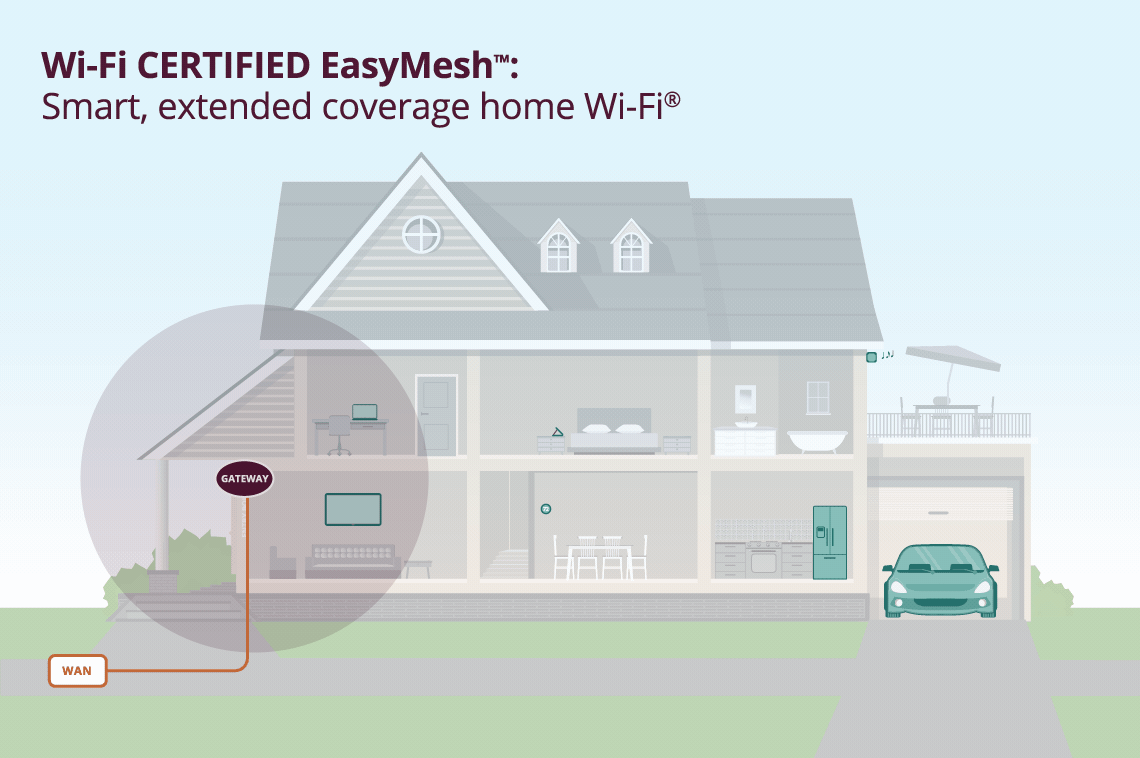The concern: Wi-Fi® coverage in the home
There is a vast difference between what customers should have and what they do have when it comes to broadband coverage in the home. Current limitations on Wi-Fi coverage in the home often restrict customers from using their broadband services in many locations within their premises. This lowers satisfaction, increases churn, and causes a high volume of troubleshooting calls.
The imaginary solution: proprietary multi-AP systems
Inexpensive and unmanaged Wi-Fi extenders can fill in some coverage holes in the home, but extenders generally do not have the same level of performance as multi-access point (multi-AP) systems.
Deploying multiple Wi-Fi APs across the premises can solve coverage problems, but only if the APs are properly configured, such as using non-overlapping Wi-Fi channels. A number of vendors now offer multi-AP systems which can self-configure, and broadband operators are using these systems.
Many current multi-AP systems are proprietary, with the complete set of hardware and software controlled by a single vendor. These offer an enticing, rapid, off-the-shelf solution to coverage problems. However, using these systems means that a user or operator is locked-in to a single vendor, now and in the future. A customer cannot provide their own AP, and upgrades are limited to offerings from that specific vendor. Over time, the locked-in system may eventually become a headache.
Other solutions claim to be “open” but are not standardized and ultimately require proprietary systems, similarly, causing vendor lock-in.
The real solution: Wi-Fi CERTIFIED EasyMesh™
Wi-Fi CERTIFIED EasyMesh™ was introduced by Wi-Fi Alliance® to bring a common approach to multi-AP Wi-Fi networks and eliminate vendor lock-in by standardizing the interface between a controller and various APs.
Multi-AP systems that support Wi-Fi EasyMesh™ interoperate, so a certified multi-AP controller or agent can work with a multi-AP controller or agent from other vendors. A customer or operator who wants a different controller or AP can just swap it out with another Wi-Fi EasyMesh device. Any vendor’s multi-AP controller algorithms or software that support Wi-Fi EasyMesh can be used, and upgrading is seamless.
Wi-Fi EasyMesh supports the functions needed to provide complete Wi-Fi coverage, including basic diagnostics, channel and band changes, and the ability to steer stations to a different associated AP as needed.
Continuing solutions: further enhancing Wi-Fi EasyMesh
Wi-Fi EasyMesh solves Wi-Fi coverage concerns with a standardized, interoperable approach to multi-AP networks. New enhancements to Wi-Fi EasyMesh will further enhance multi-AP networks.
New capabilities of Wi-Fi EasyMesh include traffic separation, enhanced client steering with Wi-Fi Agile Multiband support, diagnostic support for Wi-Fi Data Elements, controlled AP channel scans, and coordinated Dynamic Frequency Selection (DFS) to enable the use of 5 GHz DFS channels.
Wi-Fi EasyMesh provides a solution for multi-AP networks now and in the future, and ASSIA believes the technology can grow to encompass further upgrades such as Wi-Fi cloud management.
The statements and opinions by each Wi-Fi Alliance member and those providing comments are theirs alone, and do not reflect the opinions or views of Wi-Fi Alliance or any other member. Wi-Fi Alliance is not responsible for the accuracy of any of the information provided by any member in posting to or commenting on this blog. Concerns should be directed to info@wi-fi.org.





Add new comment